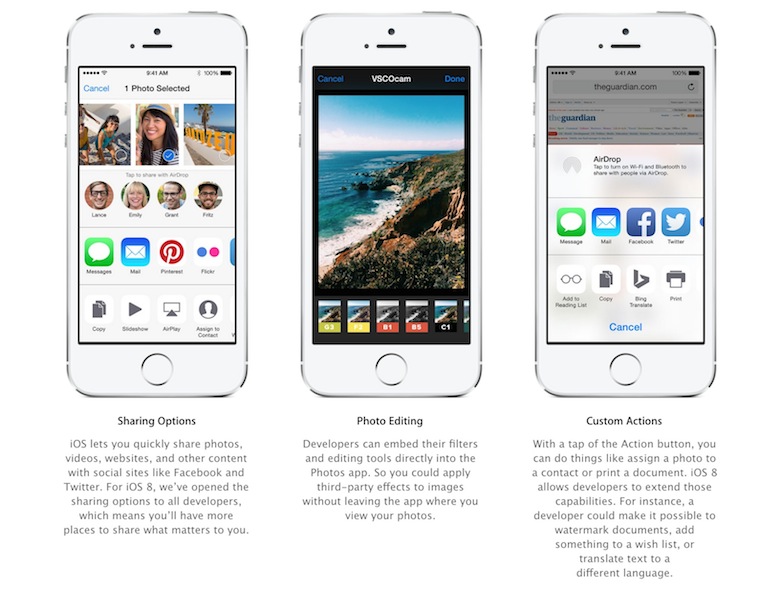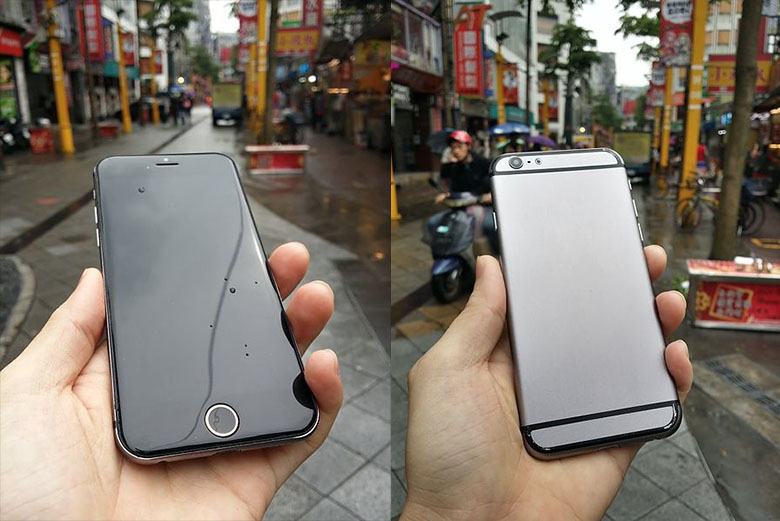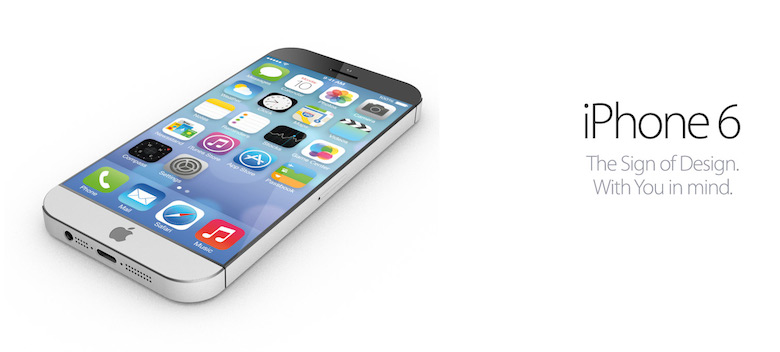
by
Last week, Apple announced iOS 8 at its opening keynote for WWDC 2014. That comes as no real surprise as WWDC is where we typically meet the early incarnations of Apple’s newest software versions.
For the last several years, though, we’ve closed out of our WWDC keynote livesream and liveblog tabs with a subtle bitter taste in our mouths. Let’s be honest, iOS 4, iOS 5, iOS 6 and iOS 7 were all pretty boring.
Sure, iOS 7 was a whole lot better to look at than previous versions, but useful features in the update were few and far between. We got Control Center, a better Notification Center, some more functionality in Siri, and a prettier (yet no more functional) task switching page. The updates before that brought things like home screen folders and wallpapers, copy and paste, Notification Center, task switching, and other necessary features. But in recent years, Apple really hasn’t wowed anyone. It’s mainly been playing a perpetual game of catchup since 2009.
Frankly, iOS 8 didn’t exactly wow many of us either. Continuity, what Apple is calling the background sync between Mac and iOS devices, is extremely cool, especially in a showcase setting, but it’s not revolutionary. If you start typing an email from your iPhone and realize you’re going to need a keyboard, you can pick up where you left off from an iPad or Mac using the stock Mail app. Google, for example, has been syncing information in the background for years. If I start typing an email out in Gmail, it automatically saves and I can continue writing from any mobile device with Gmail access using the Drafts feature. Sure, Continuity will soon take it a step further by syncing half-typed messages across devices, but that’s likely a niche feature few will take advantage of.
I don’t want to focus on how many feature Apple copied from Google this year, though. Every tech company seemingly borrows ideas from other companies on a weekly or monthly basis these days. Who does what first doesn’t matter; who does it better, however, matters.
However, when I briefly hopped on the Pocketnow Weekly last week, Michael read a short piece of listener mail asking an age-old question at a very important turning point for iOS. Best of all, it came in the form of a haiku:
“iOS Android
What reasons are there to switch?
Similar features?”
Michael took the question one step further and asked, “If you’ve never tried iOS, is this the year to try an iPhone?” Jaime, Stephen, and I talked about the question for a bit and ultimately came to the conclusion that, yes, you should try the iPhone this year. Even if you have in the past, you should give it another go later this year. But … why?
If you’ve been on the fence for the last few years and want to give iOS a serious look, you will find below the main reasons to check out iOS 8 and new iOS hardware in the fall.
A more open Apple
With what the company calls Extensibility, Apple is fixing my biggest gripe with iOS. It’s giving developers and users more control over the individual user experience than ever before.
In years past (and currently, for that matter), the user experience is what Apple dictates. Using the share menu, you can only share to the services Apple says is okay. You are stuck to the keyboard Apple says is best. You can’t set default applications. Nothing goes unless Apple gives it the green light.
 With Extensibility, Apple is opening up some of the iOS user experience to developers. Within applications, users will be able to share to third-party services. For instance, you will be able to share pictures from the Photos app directly to Google Drive, Instagram, or Google+. Before, to share photos to these applications, you’d have to go to the individual apps and load the pictures from within each app. Third-party widgets will also be available for at-a-glance information in the Today view in Notification Center. And third-party developers have access to Touch ID, too.
With Extensibility, Apple is opening up some of the iOS user experience to developers. Within applications, users will be able to share to third-party services. For instance, you will be able to share pictures from the Photos app directly to Google Drive, Instagram, or Google+. Before, to share photos to these applications, you’d have to go to the individual apps and load the pictures from within each app. Third-party widgets will also be available for at-a-glance information in the Today view in Notification Center. And third-party developers have access to Touch ID, too.
Another big change due to Extensibility is the ability to install and use third-party keyboards. You will soon see keyboards like Minuum, SwiftKey, Swype, and others appear on iOS, and all the woes of typing on iOS will be gone.
As seemingly minor as these changes may be, they dramatically change how mature and polished the entire user experience of the OS is. Mobile platforms are heavily centered around sharing, yet iOS has been tragically locked-down for the last seven years. It’s about time Apple became a little more lax about user and developer control.
More than ever before, users will be able to cater the iOS experience to their use cases. There’s a lot to be said for that.
Multitasking?
I wrote an editorial about the lack of true multitasking on iOS last week. Basically, not enabling the iPad to run two applications side by side is a huge missed opportunity on Apple’s part. It’s a perfect use case for the larger display on the iPad mini or iPad Air, yet in what we’ve seen of the update, there is no new multitasking feature or functionality.
Part of the reason is incompatible hardware. The newest iOS devices only have 1GB RAM. Multitasking will call for more memory, likely more than current hardware can handle.
However, after some digging through the code, developer Steve Troughton Smith appears to have found split-screen functionality code in the update. It wouldn’t be the first time a feature wasn’t originally announced at WWDC but still made it into the final version of software in the fall. So there’s definitely still hope for multitasking in iOS 8.
Cross your fingers, folks.
Fitting hardware
It’s also looking more and more likely that the iPhone 6 will be much larger than its 4-inch predecessor.
Rumor has it, the iPhone 6 may come in two sizes: 4.7-inches and 5.5-inches. We’re not certain how true these rumors are, but more information corroborating these two sizes keeps appearing all around the Web.
I’m personally not convinced Apple will abandon the horde of users who still prefer the smaller size of the current iPhone. Chances are, there will be more iPhones to choose from this year and if the rumors are true, size options will abound.
But let’s not forget the other half of the hardware equation: feature support.
 Like I mentioned above, some of the iOS 8 features sound like they may require new hardware to be fully functional. For instance, the handsfree “Hey, Siri” feature only works with an iPhone or iPad which is charging. This is likely due to the sort of drain the feature would cause on battery power.
Like I mentioned above, some of the iOS 8 features sound like they may require new hardware to be fully functional. For instance, the handsfree “Hey, Siri” feature only works with an iPhone or iPad which is charging. This is likely due to the sort of drain the feature would cause on battery power.
However, it wouldn’t be unreasonable to believe Apple is hard at work installing a low-power core for always-on voice listening (a la Moto X’s X8 mobile computing system). The iPhone 5s already has a dedicated low-power core for tracking physical activity – the M7 motion coprocessor. Adding another CPU dedicated to hands-free activation of Siri sounds exactly like something Apple would (and should) do.
There’s also reason to believe the newer iOS devices will come fitted with more RAM. Rumors still point to only 1GB, but seeing how limiting it can be on current hardware, it would make sense for Apple to upgrade this, especially if multitasking is going to happen in the near future.
But don’t jump the gun
A lot of this information is based on rumors, and a lot of the recommendation to give iOS 8 a try – again or for the first time – hinges on most of those rumors coming true.
Don’t base your decision on what people are currently saying about iOS 8 beta 1.
If you’re interested in iOS and not sure if you should give it another crack, our word of advice is to sit tight until fall and see what hardware Apple releases alongside the final version of iOS 8. Maybe Apple will unveil even more features. And rest assured, Apple will cater its new hardware to whatever demanding features the new software brings.




No comments:
Post a Comment